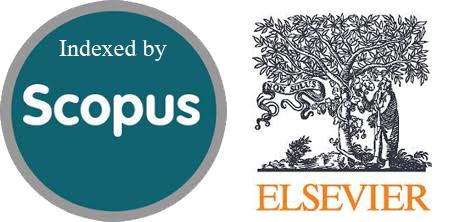Assessment of Anti-Helicobacter Pylori Eradication Regimens in Basrah Gastroenterology and Hepatology Hospital
DOI:
https://doi.org/10.54133/ajms.v5i.147Keywords:
H. pylori eradication, Treatment regimens, Levofloxacin, ClarithromycinAbstract
Background: For Helicobacter pylori eradication failures, levofloxacin-based therapy has been widely recommended. Objective: To find the most efficient H. pylori eradication treatment in Basrah. Method: The Basrah Gastroenterology and Hepatology Hospital conducted a prospective descriptive study from September to December 2022. Patients with dyspepsia who presented to the outpatient clinic were tested for H. pylori infection. The study included 66 patients who had a confirmed diagnosis of infection by either a H. pylori stool antigen test or a urea breath test. They were allocated to one of two eradication regimens at random: regimen A (omeprazole, levofloxacin, and amoxicillin) and regimen B (omeprazole, clarithromycin, and metronidazole). Patients were re-evaluated and tested for H. pylori infection after a 4-week follow-up period. Symptom relief and medication side effects were recorded. Results: Sixty-two patients were enrolled; the mean age was 34.97 years, with a range of 7 to 68 years. Thirty-six (58.1%) were female, while 26 (41.9%) were male. In the follow-up test, the majority of patients (85.5%) tested negative, representing the total eradication rate. When compared to regimen A, regimen B had a larger number of patients reporting side effects (29.1% vs. 9.7%). Regimen A demonstrated a significantly greater rate of effective eradication compared to regimen B. In regimen B, the percentage of patients who had no change in symptoms following therapy was larger (32.3%) than in regimen A (6.5%). Conclusion: A levofloxacin-based treatment (regimen A) is more effective in eradicating H. pylori infection than regimen B.
Downloads
References
Kim J, Wang TC. Helicobacter pylori and Gastric Cancer. Gastrointest Endosc Clin N Am. 2021;31(3):451-465. doi: 10.1016/j.giec.2021.03.003. DOI: https://doi.org/10.1016/j.giec.2021.03.003
Sjomina O, Pavlova J, Niv Y, Leja M. Epidemiology of Helicobacter pylori infection. Helicobacter. 2018;23(1):e12514. doi: 10.1111/hel.12514. DOI: https://doi.org/10.1111/hel.12514
Elshair M, Ugai T, Oze I, Kasugai Y, Koyanagi Y, Hara K, et al. Impact of socioeconomic status and sibling number on the prevalence of Helicobacter pylori infection: a cross-sectional study in a Japanese population. Nagoya J Med Sci. 2022;84(2):374-387. doi: 10.18999/nagjms.84.2.374.
Rowland M, Kumar D, Daly L. O′ Connor P, Vaughan D, Drumm B. Low rates of Helicobacter pylori reinfection in children. Gastroenterology. 1999;117:336-341. doi: 10.1053/gast.1999.0029900336. DOI: https://doi.org/10.1053/gast.1999.0029900336
Tindberg Y, Blennow M, Granström M. Clinical symptoms and social factors in a cohort of children spontaneously clearing Helicobacter pylori infection. Acta Paediatrica. 1999;88(6):631-635. doi: 10.1080/08035259950169288. DOI: https://doi.org/10.1111/j.1651-2227.1999.tb00012.x
Solnick JV, Schauer DB. Emergence of diverse Helicobacter species in the pathogenesis of gastric and enterohepatic diseases. Clin Microbiol Rev. 2001;14(1):59-97. doi: 10.1128/CMR.14.1.59-97.2001. DOI: https://doi.org/10.1128/CMR.14.1.59-97.2001
Lee Y-C, Lin J-T. Screening and treating Helicobacter pylori infection for gastric cancer prevention on the population level. J Gastroenterol Hepatol. 2017;32(6):1160-1169. doi: 10.1111/jgh.13726. DOI: https://doi.org/10.1111/jgh.13726
Malfertheiner P, Megraud F, Rokkas T, Gisbert JP, Liou J-M, Schulz C, et al. Management of Helicobacter pylori infection: The Maastricht VI/Florence consensus report. Gut. 2022;71(9):1724-1762. doi: 10.1136/gutjnl-2022-327745. DOI: https://doi.org/10.1136/gutjnl-2022-327745
Gold BD, Gilger MA, Czinn SJ. New diagnostic strategies for detection of Helicobacter pylori infection in pediatric patients. Gastroenterol Hepatol. 2014;10(12 Suppl 7):1-19.
Abbas M, Sharif FA, Osman SM, Osman AM, El Sanousi SM, Magzoub M, et al. Prevalence and associated symptoms of Helicobacter pylori infection among schoolchildren in Kassala State, East of Sudan. Interdiscip Perspect Infect Dis. 2018;2018:4325752. doi: 10.1155/2018/4325752. DOI: https://doi.org/10.1155/2018/4325752
Gisbert JP, Pajares JM. 13C-urea breath test in the diagnosis of Helicobacter pylori infection -- a critical review. Aliment Pharmacol Ther. 2004;20(10):1001-1017. doi: 10.1111/j.1365-2036.2004.02203.x. DOI: https://doi.org/10.1111/j.1365-2036.2004.02203.x
Patel SK, Pratap CB, Jain AK, Gulati AK, Nath G. Diagnosis of Helicobacter pylori: what should be the gold standard? World J Gastroenterol. 2014;20(36):12847-12859. doi: 10.3748/wjg.v20.i36.12847. DOI: https://doi.org/10.3748/wjg.v20.i36.12847
Patel SK, Mishra GN, Pratap CB, Jain AK, Nath G. Helicobacter pylori is not eradicated after triple therapy: a nested PCR based study. Biomed Res Int. 2014;2014:483136. doi: 10.1155/2014/483136. DOI: https://doi.org/10.1155/2014/483136
Nyssen OP, Perez-Aisa A, Tepes B, Castro-Fernandez M, Kupcinskas J, Jonaitis L, et al. Adverse event profile during the treatment of Helicobacter pylori: A real-world experience of 22,000 patients from the european registry on H. pylori management (Hp-EuReg). Am J Gastroenterol. 2021;116(6):1220-1229. doi: 10.14309/ajg.0000000000001246. DOI: https://doi.org/10.14309/ajg.0000000000001246
Hafeez M, Qureshi ZA, Khattak AL, Saeed F, Asghar A, Azam K, et al. Helicobacter pylori eradication therapy: Still a challenge. Cureus. 2021;13(5):e14872. doi: 10.7759/cureus.14872. DOI: https://doi.org/10.7759/cureus.14872
Miehlke S, Meining A, Lehn N, Höchter W, Weingart J, Simon T, et al. Comparison of omeprazole, metronidazole and clarithromycin with omeprazole/amoxicillin dual-therapy for the cure of Helicobacter pylori infection. Digestion. 1998;59(6):646-650. doi: 10.1159/000007569. DOI: https://doi.org/10.1159/000007569
Zuckerman JM. Macrolides and ketolides: azithromycin, clarithromycin, telithromycin. Infect Dis Clin North Am. 2004;18(3):621-649. doi: 10.1016/j.idc.2004.04.010. DOI: https://doi.org/10.1016/j.idc.2004.04.010
Graham DY, Lee YC, Wu MS. Rational Helicobacter pylori therapy: evidence-based medicine rather than medicine-based evidence. Clin Gastroenterol Hepatol. 2014;12(2):177-186. doi: 10.1016/j.cgh.2013.05.028. DOI: https://doi.org/10.1016/j.cgh.2013.05.028
Boyanova L, Hadzhiyski P, Kandilarov N, Markovska R, Mitov I. Multidrug resistance in Helicobacter pylori: current state and future directions. Expert Rev Clin Pharmacol. 2019;12(9):909-915. doi: 10.1080/17512433.2019.1654858. DOI: https://doi.org/10.1080/17512433.2019.1654858
Hu Y, Zhu Y, Lu NH. Novel and effective therapeutic regimens for Helicobacter pylori in an era of increasing antibiotic resistance. Front Cell Infect Microbiol. 2017;7:168. doi: 10.3389/fcimb.2017.00168. DOI: https://doi.org/10.3389/fcimb.2017.00168
Azab ET, Thabit AK, McKee S, Al-Qiraiqiri A. Levofloxacin versus clarithromycin for Helicobacter pylori eradication: are 14 day regimens better than 10 day regimens? Gut Pathog. 2022;14(1):24. doi: 10.1186/s13099-022-00502-3. DOI: https://doi.org/10.1186/s13099-022-00502-3
Liou JM, Chen CC, Chen MJ, Chen CC, Chang CY, Fang YJ, et al. Sequential versus triple therapy for the first-line treatment of Helicobacter pylori: a multicenter, open-label, randomized trial. Lancet. 2013;381(9862):205-213. doi: 10.1016/S0140-6736(12)61579-7. DOI: https://doi.org/10.1016/S0140-6736(12)61579-7
Qian J, Ye F, Zhang J, Yang YM, Tu HM, Jiang Q, et al. Levofloxacin-containing triple and sequential therapy or standard sequential therapy as the first line treatment for Helicobacter pylori eradication in China. Helicobacter. 2012;17(6):478-485. doi: 10.1111/j.1523-5378.2012.00993.x. DOI: https://doi.org/10.1111/j.1523-5378.2012.00993.x

Downloads
Published
How to Cite
Issue
Section
License
Copyright (c) 2023 Al-Rafidain Journal of Medical Sciences ( ISSN 2789-3219 )

This work is licensed under a Creative Commons Attribution-NonCommercial-ShareAlike 4.0 International License.
Published by Al-Rafidain University College. This is an open access journal issued under the CC BY-NC-SA 4.0 license (https://creativecommons.org/licenses/by-nc-sa/4.0/).











